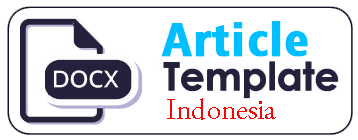Assessment of the effectiveness of the project-based learning model in internal audit learning at the civil servant as millenial generations
DOI:
https://doi.org/10.54849/monas.v1i2.10Keywords:
internal audit, project-based learning models, effectiveAbstract
This action research aims to assess the effectiveness of internal audit learning in the training of BPKP’s civil servant's candidates. There is a gap between internal audit conceptual learning with the background of 24 trainees as Millenials generations with technological capabilities and low social care. Then, the internal audit learning process must be in line with their characters through project-based learning models. The research method uses qualitative and quantitative through making PKA and KKA project. Learning effectiveness was assessed by trainers qualitatively through action observations and quantitatively through pre-test and post-test. Assessment from training participants also used through online surveys. The results show that all training participants have been active and able to make the PKA-KKA project, 79,17%. Quantitative achievement in pre-test and post-test shows increasing in average pre-post tests, 39,57, from average pre-test, 60,21, have been average post-test, 99,58. T paired test indicates P-value with 0,0000 or significant positive. On the other hand, a qualitative assessment with participants’ online surveys showed that 59.1% of participants rated learning as having improved internal audit understanding and 52,38% suggest to continued implementation of the project-based learning model. This finding shows project-based learning models in the internal audit learning process was effective in the training of BPKP’s civil servant's candidates.
Downloads
Issue
Section
License
Authors who publish in this journal agree to the following terms:
- Authors retain copyright and grant the journal right of first publication with the work simultaneously licensed under a Creative Commons Attribution-NonCommercial-ShareAlike 4.0 International License that allows others to share the work with an acknowledgement of the work's authorship and initial publication in this journal.
- The journal allows the authors to hold the copyright without restrictions and to retain publishing rights without restrictions.
- Authors can enter into separate, additional contractual arrangements for the non-exclusive distribution of the journal's published version of the work (e.g., post it to an institutional repository or publish it in a book), with an acknowledgement of its initial publication in this journal.








